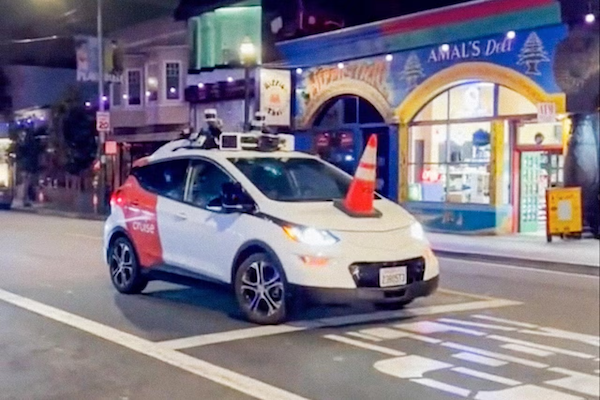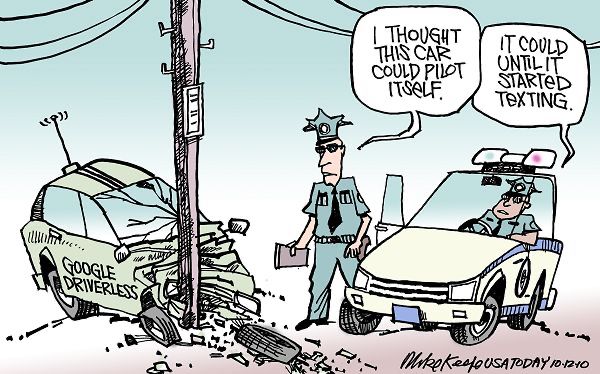
(quote)
California has ordered the company Cruise to immediately stop operations of its driverless cars in the state. The Department of Motor Vehicles said on Tuesday that it was issuing the indefinite suspension because of safety issues with the vehicles. “When there is an unreasonable risk to public safety, the DMV can immediately suspend or revoke permits,” the DMV wrote in a statement. “There is no set time for a suspension.”
The move comes after one of Cruise’s driverless cars struck a pedestrian in downtown San Francisco earlier this month. The incident involved a woman who was first hit by a human driver and then thrown onto the road in front of a Cruise vehicle. The Cruise vehicle braked but then continued to roll over the pedestrian, pulling her forward, then coming to a final stop on top of her. Rescuers used the jaws of life to remove the vehicle and free the woman. The pedestrian survived but sustained life-threatening injuries.
The DMV originally gave Cruise a permit for 300 driverless vehicles in San Francisco, but it cut that number in half after one of its cars collided with a firetruck in August.
Driverless cars run by Cruise, which is owned by GM, and Waymo, which is owned by Alphabet, have been involved in numerous mishaps in the city over the past several months. They’ve run red lights, rear-ended a bus and blocked crosswalks and bike paths.
San Francisco’s police and fire departments have also said the cars aren’t yet ready for public roads. They’ve tallied more than 55 incidents where self-driving cars have gotten in the way of rescue operations. Those incidents include driving through yellow emergency tape, blocking firehouse driveways, running over fire hoses and refusing to move for first responders.
Despite those incidents, state regulators voted in August to allow self-driving car companies to expand their operations in San Francisco and other California cities. That prompted the city of San Francisco to file motions with the state demanding a halt to that expansion. The crackdown on Cruise comes as GM announced during its earnings call this week that it is intent on expanding its driverless car program in the U.S.
Cruise, GM’s robotaxi service, suspends all driverless operations nationwide
The California Department of Motor Vehicles this week revoked the license for Cruise, which recently began transporting passengers throughout San Francisco. Cruise is also being investigated by U.S. regulators after receiving reports of potential risks to pedestrians and passengers.
Earlier this month, a Cruise robotaxi notably ran over a pedestrian who had been hit by another vehicle driven by a human. The pedestrian became pinned under a tire of the Cruise vehicle after it came to a stop — and then was pulled for about 20 feet (six meters) as the car attempted to move off the road. Bryant Walker Smith, a University of South Carolina law professor who studies automated vehicles, wants to know “who knew what when?” at Cruise, and maybe GM, following the accident.
Also earlier this month, the National Highway Traffic Safety Administration announced that it was investigating Cruise’s autonomous vehicle division after receiving reports of incidents where vehicles may not have used proper caution around pedestrians in roadways, including crosswalks.
The NHTSA’s Office of Defects Investigation said it received two reports involving pedestrian injuries from Cruise vehicles. It also identified two additional incidents from videos posted to public websites, noting that the total number is unknown.
In December of last year, the NHSTA opened a separate probe into reports of Cruise’s robotaxis that stopped too quickly or unexpectedly quit moving, potentially stranding passengers. Three rear-end collisions that reportedly took place after Cruise AVs braked hard kicked off the investigation.
According to an Oct. 20 letter that was made public Thursday, since beginning this probe the NHSTA has received five other reports of Cruise AVs unexpectedly breaking with no obstacles ahead. Each case involved AVs operating without human supervision and resulted in rear-end collisions.
(unquote)
Image courtesy Josh Edelson / AFP via Getty Images






